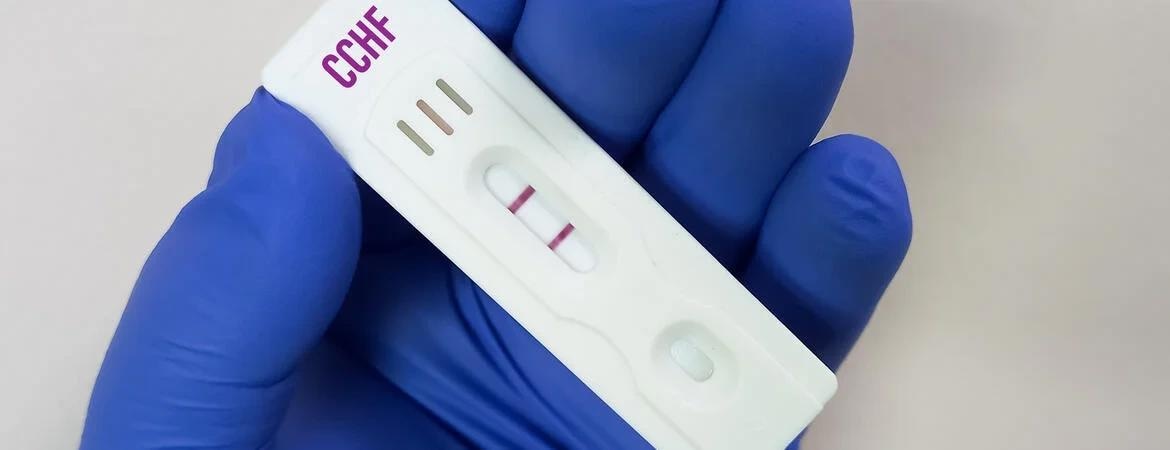The Crimean Congo Hemorrhagic Fever Virus, or CCHFV, can be prevented by therapeutically relevant human monoclonal antibodies, according to research led by the University of California, Riverside.

Image Credit: Md Babul Hosen, iStock / Getty Images Plus
Their research, which has been published online in the journal Nature Communications, could help develop specialized treatments for infected patients.
The WHO classifies CCHF as a priority pathogen because it is an emerging zoonotic disease with the potential to spread. Death rates from CCHF outbreaks can reach 40%. The virus, which was first identified in Crimea in 1944–1945 and then decades later in the Congo, recently made its way to Western Europe via ticks brought by migratory birds.
Africa, the Balkans, the Middle East, and some Asian nations have already experienced an endemic spread of the disease. CCHFV is classified as a Category A bioterrorism/biological warfare agent and a pathogen with a biosafety level 4 designation (the highest level of biocontainment).
There is no vaccine to aid in infection prevention, and there are no effective treatments.
The United States Army Medical Research Institute of Infectious Diseases, or USAMRIID, which studies CCHFV due to the threat it poses to military personnel worldwide, worked with Scott D. Pegan, a professor of biomedical sciences at the UCR School of Medicine, on this study.
They looked at proteins called monoclonal antibodies, or mAbs, which bind to antigens, which are foreign substances that enter the body and trigger an immune response to mount a defense.
Scientists from USAMRIID Joseph W. Golden and Aura R. Garrison reported that when given post-infection, an antibody known as 13G8 protected mice from lethal CCHFV. They gave Pegan access to that antibody’s sequence data, enabling UCR to “humanize” it and carry out additional research.
The USAMRIID study showed that the mouse mAb, 13G8, helps the immune system clear the infection. We knew 13G8 binds to a viral glycoprotein called GP38, but it was not clear where that binding took place. So, we analyzed the structure to gain an understanding of how it works and pinpoint exactly where the binding occurs. This knowledge sheds light on the potential of these mAbs to be effective against a broad range of CCHF viral strains.”
Scott Pegan, Professor, Biomedical Sciences, School of Medicine, University of California, Riverside
Serum from patients who contracted CCHF in Turkey was also made available to Pegan’s research team. Two new antigenic sites on GP38 were found, and seven mAbs were isolated from a CCHFV survivor.
The structure of GP38 bound to one of the seven non-neutralizing human antibodies was then determined, in addition to 13G8. According to the authors, understanding the structure of this complex can also be advantageous clinically.
This structural information further characterizes GP38 as an antigen of interest for vaccination studies, while also advancing mAb development toward CCHFV. The therapeutic role for non-neutralizing antibodies in preventing disease is becoming more evident for high-risk pathogens such as Ebola, Lassa, and Nipah virus.”
Aura R. Garrison, Scientist, United States Army Medical Research Institute of Infectious Diseases
The tri-segmented RNA genome of the CCHFV consists of a large, medium, and small segment, according to Pegan. The Special Pathogens Branch at the Centers for Disease Control and Prevention, or CDC, identified GP38 as a part of the medium fragment in 2006 and contributed to the Nature Communications study. Uncertainty surrounds GP38’s function and contribution to CCHFV infection.
Pegan added, “We know that targeting GP38 stops CCHFV’s progression, but no one is fully certain about how it works. We would like to know more about its mechanism of action so that specific and effective therapeutics can be developed.”
Source:
Journal reference:
Durie, I. A., et al. (2022). Structural characterization of protective non-neutralizing antibodies targeting Crimean-Congo hemorrhagic fever virus. Nature Communications. doi.org/10.1038/s41467-022-34923-0